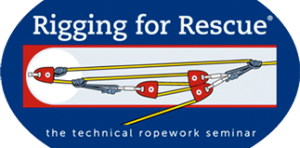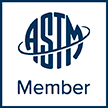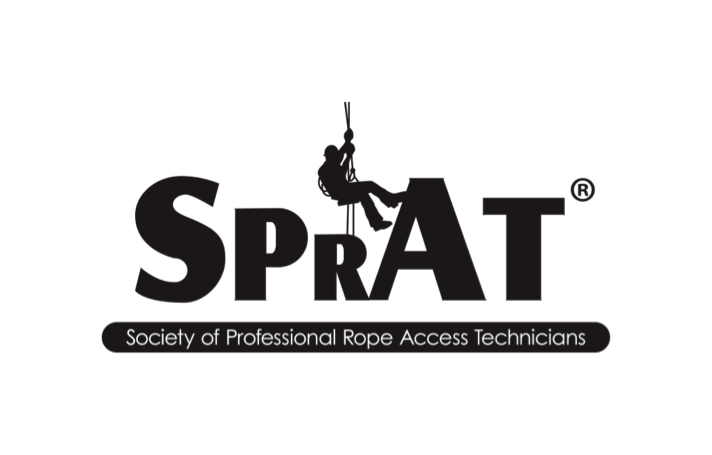Ice Conditions are Outstanding
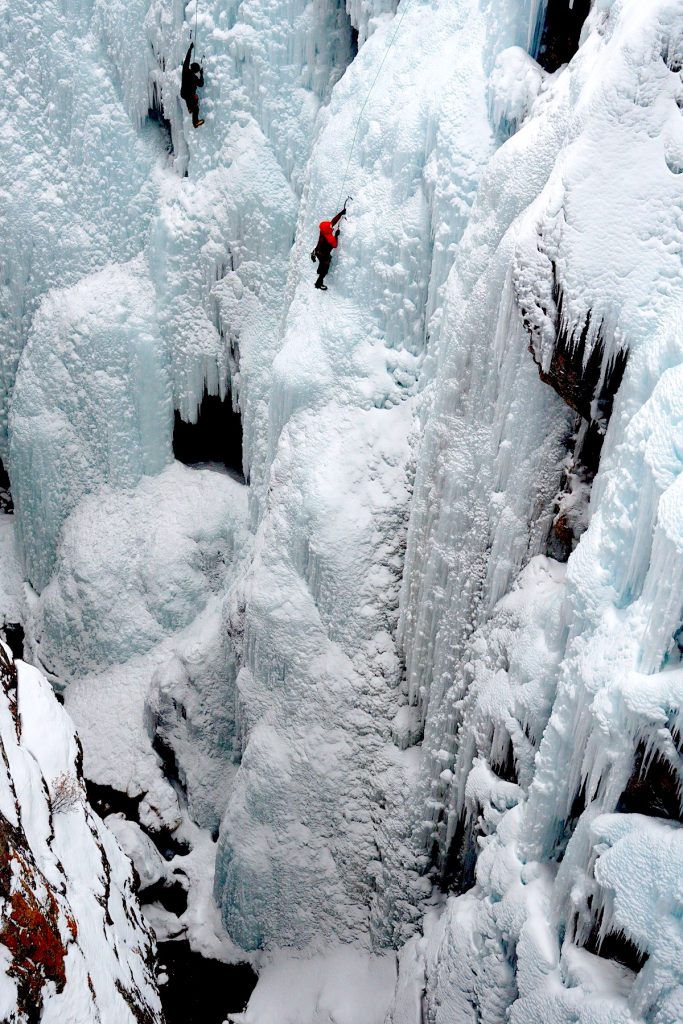
The consistently cold start to winter has created optimal conditions for both Ouray Ice Park ice-farming as well as backcountry ice formation. The Ice Park opened for the season on Dec 19th and we have been climbing backcountry ice since before Thanksgiving. We have two open enrollment Waterfall Ice Climbing & Rescue workshops scheduled for this winter. The first available is the week of Jan 11-15, 2021: https://staging4.riggingforrescue.com/upcoming-programs/waterfall-ice-and-rescue-workshop/ The Waterfall Ice Workshop focuses on ice climbing movement skills, companion rescue, as well as lightweight, small team rescue in the winter alpine setting. Please consider joining us in 2021! Happy New Year
RfR in the Summer of Covid-19
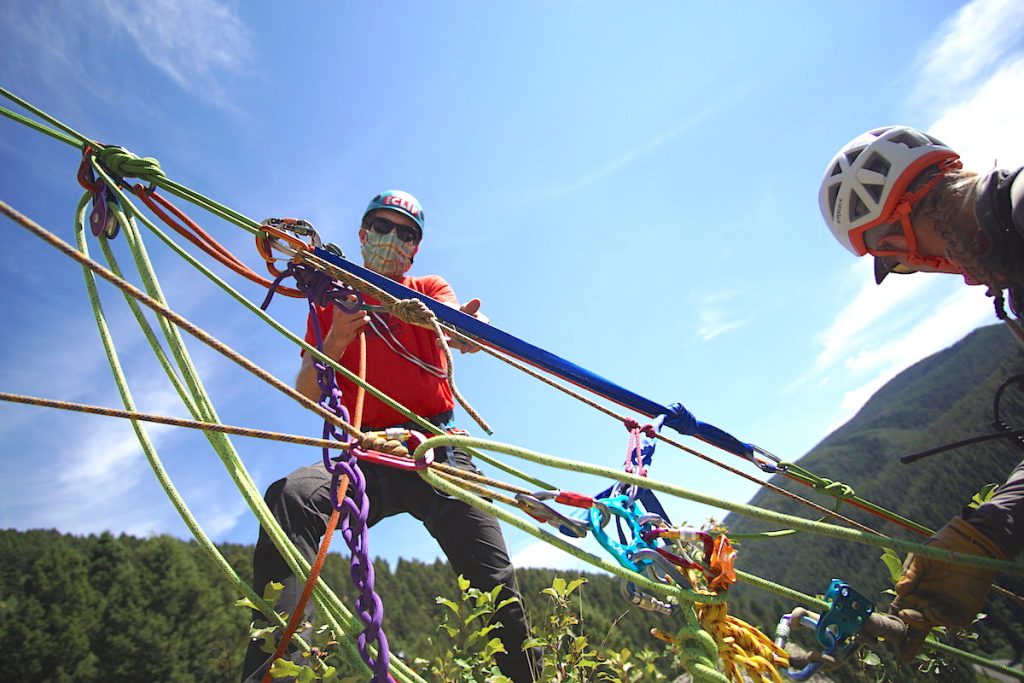
This summer we have been able to deliver our educational training services to a number of agencies, despite the challenging conditions of operating in the age of Covid-19. Most agencies have numerous protocols and/or guidelines in place for allowing their personnel and our instructors to conduct rope rescue training events. We have been utilizing recommended CDC guidelines such as masks on in close proximity of each other and/or working inside, plenty of ventilation and spacing of seating arrangements while inside, temperature checks, readily available personal hygiene tools such as hand sanitizer, and the like. Our recent week with Gallatin County SAR in Bozeman, Montana delivered bluebird weather, great site locations in Hyalite Canyon, and a thorough review of litter attending, pickoffs, as well as a big Guiding Line aerial suspension system. Like numerous other mountain rescue teams that we regularly train, Gallatin SAR has moved towards ATC-based (i.e. slot style climbing DCDs such as Petzl Reverso, Black Diamond ATC, etc.) systems as opposed to traditional brakeracks or Scarabs. These ATC systems are employed in combination with a VT Prusik Max/1 friction hitch in addition to a carabiner re-direct for additional friction. The Main and Belay are rigged identically and they are operated according to the conditions present (i.e. 1-person or 2-person load? Technical edge transition Y/N?). Post edge transition, the systems are run in dual tension for the balance of the lowering and/or raising operation. Mountain rescue teams are frequently populated with personnel coming from a climbing background. The skills required for an ATC-based system are often already present. Everything from rigging to inspections, to operations is streamlined and arguably safer for all involved.
Khumbu Climbing Center Annual Training
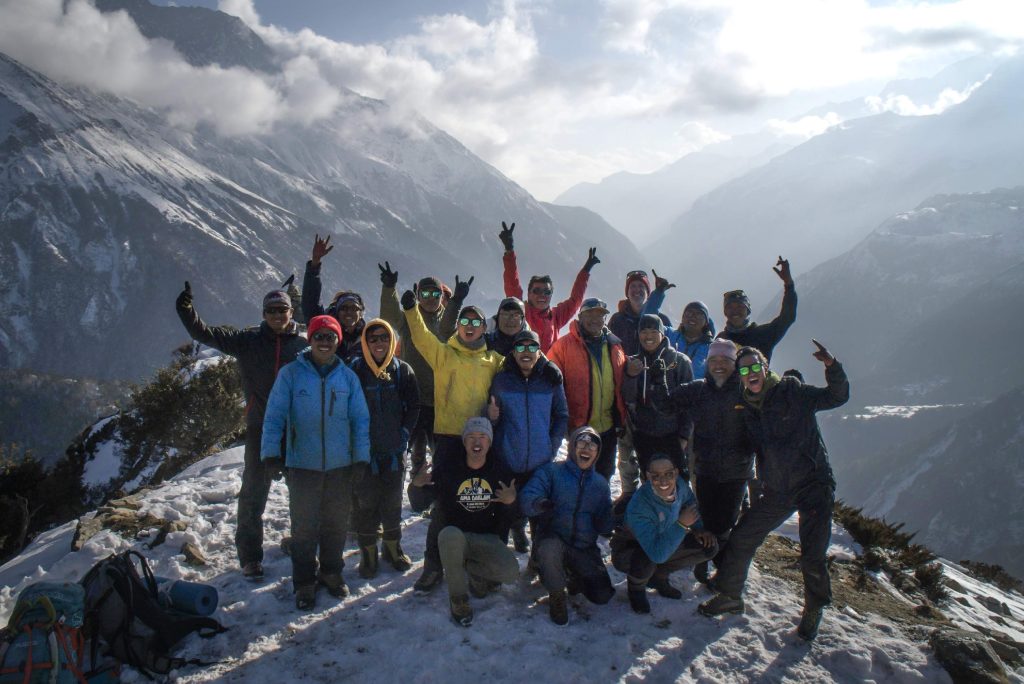
For the past two weeks, Rigging for Rescue’s Xander Bianchi has been instructing climbing and rescue techniques at the Khumbu Climbing Center (KCC) in Phortse, Nepal in the Khumbu region near Mt. Everest. Each year, Rigging for Rescue sponsors an instructor in traveling to Nepal to volunteer their expertise to the Sherpa guides and high altitude porters that operate on Everest during the spring climbing season. The Sherpa KCC attendees are often responsible for rescues that occur on Everest. The KCC training center in Phortse is the focal point for Sherpa continuing education programs revolving around climbing and rescue techniques. KCC was started through the Alex Lowe Charitable Foundation founded by Alex’s widow Jennifer Lowe and his best friend Conrad Anker. Together with many other Westerners working in conjunction with Nepalese Sherpa principals, KCC has developed an annual training program that better prepares the up and coming Sherpa guides and porters for the demands of rescue on Mt Everest. At Rigging for Rescue, we feel very privileged to have been able to offer rescue and climbing training to the Sherpa community for the past several years. A typical day of training at KCC involves a brief whiteboard discussion followed by a pretty robust hike to the local crags. Some of the terrain utilized is on sunny south facing rock crags and much of the terrain is on moderate waterfall ice climbs located in the valley ascending towards Gokyo. Climber pickoffs, companion rescue skills, litter lowers & raises, anchoring techniques, and rescue principles are all covered during the seminar. The Sherpa climbing community at Phortse and KCC are generous and gracious hosts. The annual KCC rescue training seminar is one of our favorite events of the year and we are already looking forward to 2021.
ITRS 2019
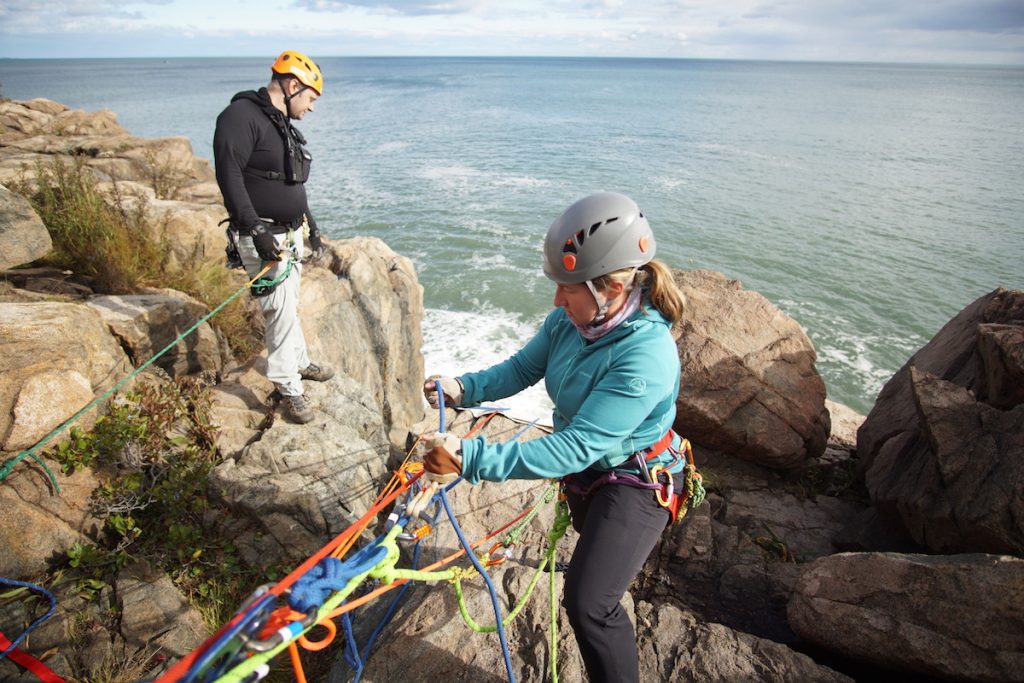
We just returned from the annual International Technical Rescue Symposium (ITRS) held in Albuquerque, NM. Rigging for Rescue has been attending and presenting at this event since its infancy in 1986 (NATRS at that time). The symposium is a gathering of around 170 attendees to discuss, dissect, and debate all things rescue-related. Having personally attended every ITRS save for one over the past 18 years, I left the 2019 version feeling like it was the best I had witnessed for the past decade. There were many excellent presentations over a broad mix of topics. It was inspiring to see how much effort others are putting into both critical thinking and testing to better our collective understanding of the systems we tie into on a daily basis. Rigging for Rescue principals Mike Gibbs and Kevin Koprek both presented: VT Prusiks for Rescue Belays (Gibbs) Human Factor Considerations: Rope Systems and Device Selection (Koprek) The new research on the VT Prusik has been an ongoing project of Rigging for Rescue’s dating back to our initial testing on that device presented to ITRS in 2014. The ITRS 2019 research paper, abstract, and video clips are now viewable on our website at: https://staging4.riggingforrescue.com/vt-prusik-rescue-belays/
VT Prusik for Rescue Belays

VT Prusik for Rescue Belays – Abstract Rope rescue teams typically operate redundant two-rope systems with inclusion of a failsafe mechanism for fall arrest. Examples include the MPD, 540° Rescue Belay, Petzl I’D, and Tandem Prusiks to name a few. Teams operating in remote environments with longer ingress/egress distances often favor lighter weight, multi-purpose systems and devices as part of their overall mission profile. In 2013, Rigging for Rescue began examining the Bluewater VT Prusik (configured as a Schwabisch ‘Max over One’ hitch) as an alternative to the Tandem Prusik Belay. In 2014, this author presented at ITRS quick look tests considering a variety of Aramid fiber friction hitches and configurations. Initial results for the VT Prusik were favorable and thus additional testing was warranted. Further testing was conducted in 2017 and 2019. The purpose was to critically examine the capabilities and limitations of the VT Prusik as a device suitable for managing fall arrest on a rope rescue system while lowering or raising a 200kg mass. Since the 2014 ITRS presentation, three primary areas of inquiry include: The British Columbia Council on Technical Rescue – Belay Competence Drop Test Method (BCCTR BCDTM) Human operators using a snug top-rope while lowering Raising scenarios with a snug top-rope and human operators Additionally, tests were conducted with the tensile testing machine on drop test sample ropes and Prusiks. The laboratory style tests (i.e. BCCTR BCDTM) demonstrated favorable results that were within industry acceptable performance criteria for: Maximum arrest force Stopping distance Integrity of the device and rope system The human operated tests we conducted produced results that compared favorably to other tests we have either witnessed or been made aware of utilizing Nylon TPB (with human operators). Mechanical devices with purpose-built fail-safe mechanisms will undoubtedly prove more reliable for fall arrest versus a user-configured system such as Tandem Prusiks or the VT Prusik. However, for teams with specific mission profiles that place a high value on lightweight, multi-purpose equipment, the single VT Prusik configured as a Max over One, appears to be a superior alternative to the traditional Nylon Tandem Prusik Belay. VT Prusik for Rescue Belays For more information, check out Rigging for Rescue’s video testing samples.
The Great State of Maine

[one_full last=”yes” spacing=”yes” center_content=”yes” hide_on_mobile=”no” background_color=”” background_image=”” background_repeat=”no-repeat” background_position=”left top” hover_type=”none” link=”” border_position=”all” border_size=”0px” border_color=”” border_style=”solid” padding=”” margin_top=”” margin_bottom=”” animation_type=”0″ animation_direction=”down” animation_speed=”0.1″ animation_offset=”” class=”” id=””][youtube id=”2kUZrF7iObs” width=”800″ height=”550″ autoplay=”no” api_params=”” class=””][/youtube][fusion_text]We recently returned from our biennial visit to the spectacular coast of Maine on Mount Desert Island in Acadia National Park. The training event brings together the handful of SAR teams that perform high angle rope rescues in the state. Given the small size of the state, it is not uncommon for the various Maine SAR teams to respond to mutual aid requests on more technical calls. The opportunity to train together every other autumn provides for great discussions on risk management decision-making, systems & devices, as well as agreed upon terminology for command and control. At the time of our previous visit, we identified a unique geological feature on one of the sea cliffs in Acadia. That discovery was filed away and we made plans to utilize it at the next training. We dubbed the feature the Crack of Doom. The approach to the fissure was unremarkable and you would not have suspected there was a narrow 25m slot going right down to the Atlantic. There was even an existing social trail frequented by visitors that passed only 4-5m uphill from where the crack originated, yet offered no indication of its existence. Apparently there was a fatality in recent history whereby a visitor slipped and fell into the slot while approaching too close. It seemed to be a worthwhile ropework objective. We spanned the slot with an artificial high directional device and lowered a participant into place on a 2-rope system to act as the stranded Subject. The ropework puzzle was solved using some confined space techniques such as lowering the rescuer on parallel pulley systems for the eventual pickoff. We secured the Subject on a small jigger system to allow the Attendant the ability to easily adjust their relative position during the raise. Additionally, the vertical stagger of the Attendant and Subject allowed the rescuer to clear the confined space entry hole at the top first and then stop the two-rope raising system; from there, the rescuer raised the Subject through the hole using the jigger system and did not have to rely on commands to move the Subject through what was a very narrow slot. It was a great exercise requiring very precise rope alignment as well as team coordination. It is always a privilege to travel to the great state of Maine for rope rescue trainings and we look forward to the next visit in 2021. [/fusion_text][/one_full][separator style_type=”none” top_margin=”” bottom_margin=”” sep_color=”” border_size=”” icon=”” icon_circle=”” icon_circle_color=”” width=”” alignment=”” class=”” id=””]
Summer wrap-up
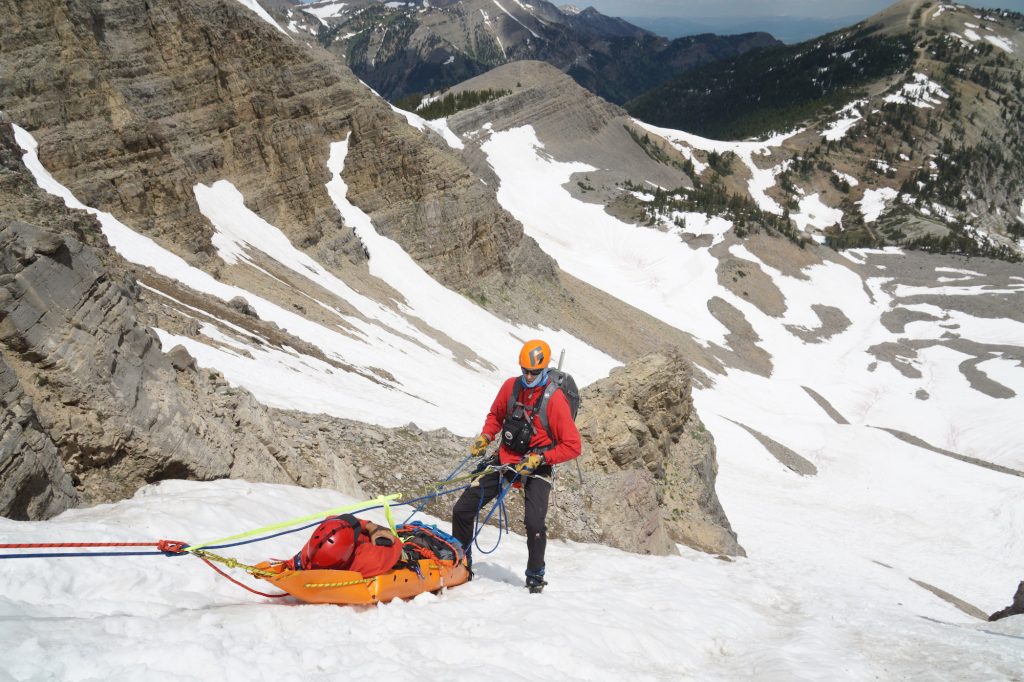
The summer RfR season proved to be a whirlwind. We traveled near and far working with a variety of rescue teams from very different backgrounds and mission profiles. Continued areas of participant interest included: pros and cons of Two Tensioned systems and how/when/why to apply them effectively use of the VT Prusik in rescue systems as both a rope grab and a fall arrest device optimization of the overall team and managing human factors Rigging for Rescue principals Kevin Koprek and Mike Gibbs are slated to present new information to the rescue community on the above topics at the upcoming International Technical Rescue Symposium to be held in Albuquerque, NM in early November. For several years now, we have been conducting drop tests incorporating live device operators. These tests have included a variety of devices, systems, and rope tensioning approaches including the VT Prusik, ATCs & Scarabs with Prusik backups, and the MPD. We look forward to sharing the results.
Denali Climbing Rangers and 212th RQS
Another great training with Denali NP and the 212th Rescue Squadron. This year’s training took place out of the Serenity Falls Hut in Chugach State Park.
